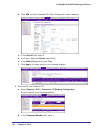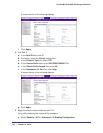
Chapter 11. CoS Queuing | 190
11
11. CoS Queuing
Class of Service Queuing
This chapter describes Class of Service (CoS) queue mapping, CoS Configuration, and traffic
shaping features. This chapter provides the following examples:
• Show classofservice Trust on page 192
• Set classofservice Trust Mode on page 193
• Show classofservice IP-Precedence Mapping on page 194
• Configure Cos-queue Min-bandwidth and Strict Priority Scheduler Mode on page 195
• Set CoS Trust Mode for an Interface on page 196
• Configure Traffic Shaping on page 197
Each port has one or more queues for packet transmission. During configuration, you can
determine the mapping and configuration of these queues.
Based on the service rate and other criteria you configure, queues provide preference to
specified packets. If a delay is necessary, the system holds packets until the scheduler
authorizes transmission. As queues become full, packets are dropped. Packet drop precedence
indicates the packet’s sensitivity to being dropped during queue congestion.
Select per interface configuration scheme:
You can configure CoS mapping, queue parameters, and queue management are configurable
per interface.
Queue management is configurable per interface.
Some hardware implementations allow queue depth management using tail dropping or
weighted random early discard (WRED).
Some hardware implementations allow queue depth management using tail dropping.
The operation of CoS queuing involves queue mapping and queue configuration.


















